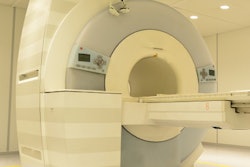Monday, November 26 | 11:50 a.m.-12:00 p.m. | SSC15-09 | Room E352
Researchers in this presentation will examine the viability of using 3D contrast-enhanced MR angiography (MRA) to visualize prostate arteries before performing an interventional radiology procedure.The researchers from Germany acquired contrast-enhanced MRA scans of 30 men scheduled to undergo the minimally invasive procedure of prostatic artery embolization to treat prostate enlargement. Presurgical planning for the procedure often involves examining medical images for the location and condition of key arteries in the prostate.
To that end, the group used the patients' MRA scans to create 3D models of their prostate vasculature, which clinicians were able to review as they prepared for the operation. Two radiologists examined the 3D models and were able to detect with high sensitivity most of the arteries branching off the internal iliac artery within the prostate.
The radiologists identified approximately 80% of all the arteries during planning, which likely helped improve their overall performance and reduce the duration of the procedure, Dr. Nagy Naguib from University Hospital Frankfurt told AuntMinnie.com.
"Three-dimensional reconstruction of the MRA of the pelvic arterial tree allows the interventional radiologist to have a detailed idea of the pelvic arterial tree before the intervention," Naguib said. "In addition, it facilitates the identification of the prostatic artery and accurately localizes its origin. All this contributes to a safer intervention."




















